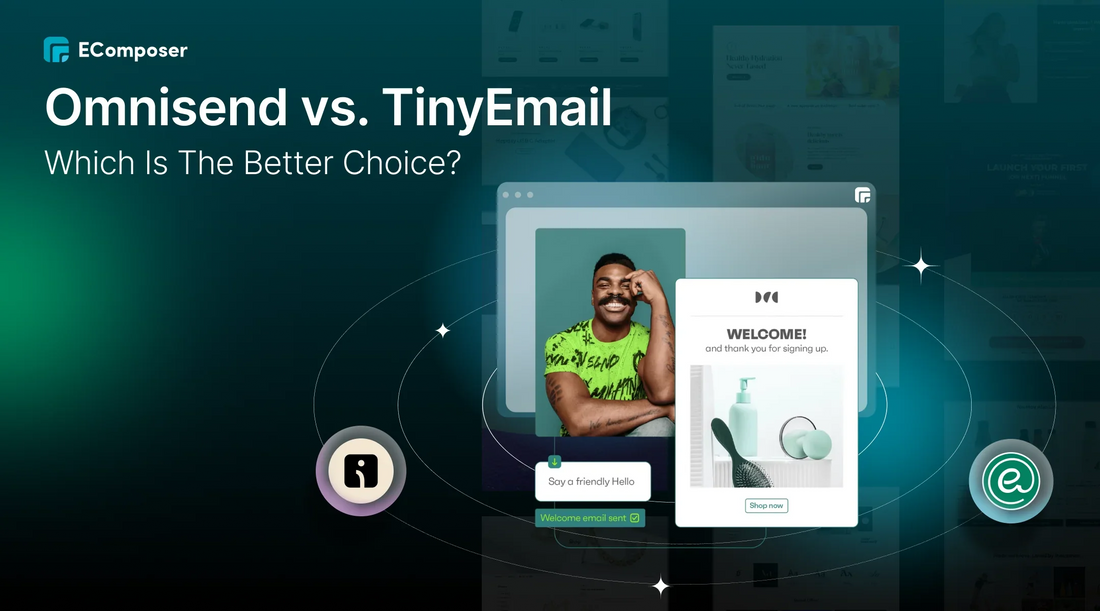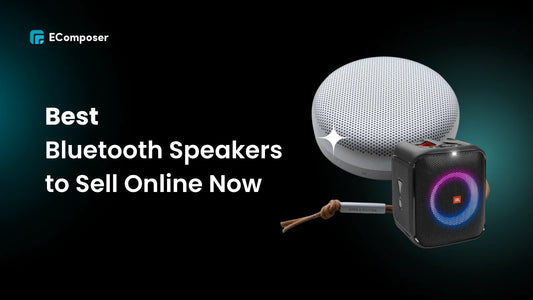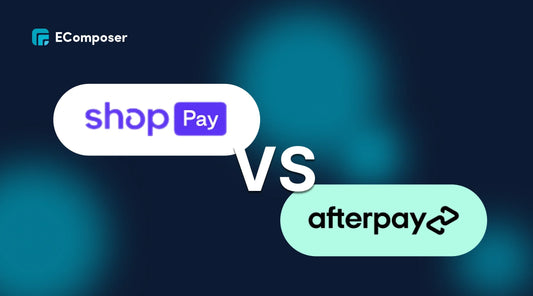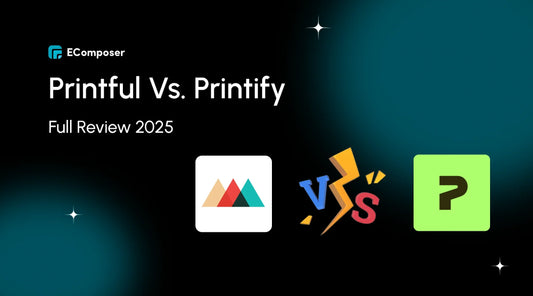Omnisend vs. TinyEmail: Which Is The Better Choice?

Table Of Contents
Are you wondering if Omnisend or TinyEmail is better for you? In this article, we'll analyze their strengths, shortcomings, and features to help you determine which one will take your email marketing plan to the next level.
Whether you're a seasoned marketer or an interested entrepreneur, this blog is an answer for you.
Platform Overview
Omnisend

Omnisend's website.
Built specifically for eCommerce, Omnisend is an omnichannel marketing automation tool that works with email, SMS, push alerts, WhatsApp, pop-ups, segmentation, and dynamic Facebook and Google ad connections. Thus, it is a comprehensive marketing automation solution. Read details Omnisend review here!
TinyEmail

TinyEmail's website.
TinyEmail is a less feature-rich email marketing platform with a respectable amount of email automation capabilities compared to Omnisend. Yet, TinyEmail offers more excellent AI capabilities.
Using TinyEmail, you can create and deliver timely, relevant emails to your consumers. Its one-click implementation makes it simple to integrate with WooCommerce and Shopify, much like Omnisend. Additionally, the tool's template library and no-coding email editor make it user-friendly for beginners.
Quick Comparison: Omnisend vs. TinyEmail
Before diving into a detailed comparison of the features of Omnisend and TinyEmail, take a look at our quick comparison summary below:
|
Feature |
Omnisend |
TinyEmail |
Winner |
|
Ease of Use |
Less intuitive for beginners. |
More intuitive for beginners. |
TinyEmail |
|
Templates & Customization |
More templates, automatic brand styling, and a powerful editor. |
Decent selection of templates, built-in image studio. |
Omnisend |
|
Email Marketing Tools |
More features, including a free plan with all features. |
Fewer features basic free plan. |
Omnisend |
|
Artificial Intelligence |
Free subject line generator. |
Full suite of AI tools. |
TinyEmail |
|
Automation Workflows |
Powerful drag-and-drop builder, pre-made templates. |
Basic workflows. |
Omnisend |
|
Segmentation & Targeting |
Highly advanced segmentation. |
Basic segmentation. |
Omnisend |
|
Integrations |
Integrates with more tools, especially for eCommerce. |
Integrates with fewer tools. |
Omnisend |
|
Analytics & Reporting |
Detailed reports and sorted lists of top performers. |
Basic analytics. |
Omnisend |
|
Customer Support |
24/7 live chat & email, fast response times, knowledge base. |
24/7 live chat & email, knowledge base. |
Tie |
|
Pricing |
Free plan with good features, paid plans with unlimited emails (Pro). |
Free plan, paid plans with limited features (Standard) and unlimited features (Pro). |
Omnisend (better value for features). |
Omnisend vs. TinyEmail: Key Features Comparison
Today, we're comparing two popular options: Omnisend and TinyEmail. We'll dissect their key features to help you decide which best suits your needs. From email templates and automation to segmentation and pricing, we'll cover everything you need to know to make an informed decision.
Ease of Use
The Omnisend dashboard seen in the image below is, in our opinion, relatively easy to use. Omnisend's menu is horizontal, and features are arranged logically; a UI is visually appealing, and a drag-and-drop editor creates stunning emails.

Omnisend dashboard.
Read the detailed review of Omnisend.
As you can see in the image below, the TinyEmail navigation menu is vertical. This makes it simpler for new users to discover information than the Omnisend dashboard in the above picture.

TinyEmail dashboard.
We believe TinyEmail is more user-friendly, especially for beginners with zero email marketing experience. Despite TinyEmaill's initial UI not being as visually appealing as Omnisend's, we strongly rate it higher because it is straightforward.
Templates And Customization Options
Omnisend has a ton of templates (over 250) for all sorts of situations - newsletters, promotions, special events, you name it. They can automatically style the templates to match your brand colors and logos, so you don't have to mess around too much.
And if you want to get fancy, you can add dynamic content, design menus, and edit images to make them your own.

Omnisend's templates.
TinyEmail has a decent selection of templates (around 50+), and they can also try to match your brand style automatically. They even have a built-in image studio with stickers, text, icons, and filters to help you customize things further.

TinyEmail's customization templates option.
So, who wins? Omnisend takes the gold. They have a wider variety of templates, automatic brand styling, and a more powerful editor to make your emails shine.
Email Marketing Tools
Regarding email marketing tools, we rate Omnisend better than TinyEmail. Guess what makes Omnisend so great? Their free plan has EVERYTHING. That's right; you can use all their fancy marketing tools for free without a credit card.
Here's what you can do with Omnisend:
- Send win-back emails to people who abandoned their carts.
- Create discount codes to boost sales.
- Choose from tons of pre-designed email templates.
- Test different versions of your emails to see which one works best.
- Add custom tags to keep your audience organized.
TinyEmail has some features, too, but they're a bit more basic, such as:
- An abandoned cart email.
- Welcome emails.
- The ability to create custom segments for your audience.
- Premium templates and product cards you can use.
- AI-generated subject lines.
- Many sender identities.
The winner? Ultimately, it depends on your needs. But if you're looking for the most bang for your buck (or should we say, free), Omnisend is the clear winner.
Artificial Intelligence (AI) Feature
A Statista survey in 2023 of US, UK, and European email marketers indicated that 51% thought AI-supported email marketing was more successful than conventional email marketing.
Both Omnisend and tinyEmail have AI features, but they approach it a bit differently.
Omnisend's all-star is their free AI subject line generator. Stuck in a subject line rut? Just feed it a few keywords, and poof. You've got catchy, personalized subject lines that'll grab your audience's attention.

Omnisend's AI subject line generator.
TinyEmail, on the other hand, takes a more well-rounded AI approach. They have a whole suite of AI tools to help you build killer campaigns, even if you're new to email marketing. Their AI can help you with:
- Subject lines (similar to Omnisend).
- Predicting which subscribers are most likely to engage with your emails.
- Building automated email sequences.
- Even wrote an email copy for you.
So, who wins the AI battle? Although Omnisend's free subject line generator is a steal, tinyEmail's full suite of AI tools can be a lifesaver for busy marketers who need a helping hand.
Automation Workflows
We love Omnisend's automation feature. This makes email, SMS, and even push notifications work together seamlessly in automated workflows you can build.

Omnisend's automation feature.
Also, their super-easy drag-and-drop builder lets you see exactly how things work. They even have pre-made templates for welcome emails, win-back emails for abandoned carts, and more.
TinyEmail isn't quite as fancy with automation, but they still have some handy tools you can use. You can build basic workflows for things like:
- Welcome emails.
- Product review requests.
- Abandoned cart recovery emails.

TinyEmail's automation feature.
While it's not as powerful as Omnisend, TinyEmail's automation can still be a lifesaver for businesses that are just starting to use it.
Segmentation & Targeting
Segmenting your audience is like creating super-targeted teams for your email marketing. Both Omnisend and TinyEmail let you do this, but Omnisend goes deep.
Omnisend lets you slice and dice your audience into hyper-specific groups based on all sorts of things: what they've browsed and bought, their lifestyle, how often they open your emails, and even details from their profiles.

Omnisend's customer contact list feature.
Plus, you can see what people look at on your website in real time. This lets you send personalized messages that are more likely to turn them into customers.

Omnisend's lifecycle stage map.
TinyEmail also has segmentation features, but they're more like dividing your class by favorite colors (but not super detailed). You can use basic things like demographics and purchase history.
So, who wins? That's Omnisend; they take the crown for advanced segmentation.
Integrations
Omnisend is all about eCommerce businesses, so it makes sense that they play well with Shopify, WooCommerce, and BigCommerce. But that's not all! They connect with over 130 other tools, like Zapier and Google Ads, making your email marketing a well-oiled machine.
TinyEmail, on the other hand, isn't as connected. They still work with Shopify, WooCommerce, and some other platforms like WordPress and Zapier. It's alright, but for an all-around business tool, you'd think they'd have more connections.
So, who wins? Omnisend takes the crown for integrations, especially for eCommerce businesses.
Analytics & Reporting
Omnisend lets you geek out over all your email performance, like:
- Open rates.
- Conversion rates.
- And a bunch of other fancy metrics.

Omnisend's analytics feature.
Plus, their advanced reports give you sorted lists of your top performance metrics-like which workflows get the most opens, which emails rake in the most cash, and even which customer groups click the most.

Omnisend's feature.
TinyEmail has analytics, too, but it's more like a basic scorecard. You can see open rates, bounce rates (emails that couldn't be delivered), and how many unique clicks you get.
They also show a performance graph to track how your campaigns are doing over time, which is neat.

TinyEmail's report feature.
But for fancy, in-depth reports, Omnisend takes the crown.
Customer Support
Need help with Omnisend? No sweat. They offer excellent 24/7 live chat and email support. Plus, their live chat is super fast, with an average wait time of under 5 minutes - that's quicker than making a cup of coffee. They even beef up their support team during crazy sales like Black Friday, so you're never left hanging. On top of that, they have a treasure trove of free articles and guides in their knowledge base and blog.
TinyEmail isn't far behind. They also boast 24/7 live chat and email support and a knowledge base packed with everything you need to know. Plus, many people on Trustpilot rate their super-fast and knowledgeable support team.
So, who wins? It's a tie! Both Omnisend and tinyEmail offer stellar customer support.
Pricing Breakdown
After exploring the email marketing capabilities of TinyEmail and Omnisend, let's talk about their pricing and see whether they meet your demands.
Omnisend Pricing
We love Omnisend because they offer a free plan forever that's perfect for new businesses just dipping their toes into email marketing. Of course, Omnisend also has paid plans if you need to reach more people. They have two plans: Standard and Pro.

Omnisend pricing.
- Free Plan:
Up to 250 subscribers 500 emails monthly, and you can even test different versions of your emails (A/B testing) to see which one works best. Plus, you can access many templates and automation to save you time.
- Standard Plan ($16/month and up):
This plan is perfect for growing businesses. It lets you reach up to 500 subscribers and send 6,000 emails monthly. You get almost everything the free plan offers, plus unlimited web push notifications.

Omnisend Standard plan.
- Pro Plan ($59/month and up):
This plan is ideal for businesses that send many emails. Here, you can have up to 2,500 subscribers and send unlimited emails. Plus, you get a bunch of free SMS credits each month, and if you're a high roller (spending $400+ a month), you even get your dedicated customer success manager.

Omnisend Pro plan.
So, whether you're just starting or a seasoned email pro, Omnisend has a plan that fits your needs.
TinyEmail Pricing
TinyEmail has three pricing plans, including a freebie perfect for small businesses on a budget.

TinyEmail pricing.
Here's the breakdown:
- Free Plan:
You can keep in touch with up to 500 subscribers and even use forms, popups, and automated emails. It's not as feature-rich as the paid plans, but you still get a good bang for your buck (which is free).
- Standard Plan ($15/month and up):
This plan is suitable for growing businesses with up to 500 subscribers. You can create up to 5 custom segments for your audience and use four pre-made ones to target specific groups.
- Pro Plan ($65/month and up):
This plan unlocks all the bells and whistles, including unlimited segments, subscribers, and even some fancy AI features to help you with your email marketing.
- Custom Plan:
TinyEmail offers custom plans with dedicated account managers for businesses sending millions of emails each month.
So, who wins on price? It's a close call! TinyEmail's Standard plan is around the same price as Omnisend's, but their Pro plan is more expensive.
The main difference is that Omnisend lets you use some features (like unlimited segments) on all their plans, while TinyEmail saves them for the Pro plan. Plus, Omnisend throws in SMS marketing on top of email, which can be a bonus.
Read more:
Conclusion: Who Should Choose Which Platform?
So, which email marketing tool should you use?
If you have eCommerce businesses and want to take your marketing to the next level, Omnisend is your best bet. It's like a super-powered toolbox with fancy features like SMS marketing, super-targeted lists, and drag-and-drop automation to help you grow your business.
On the other hand, if you're a blogger, freelancer, or a startup on a budget, TinyEmail might be a better fit. It's easier to use, keeps things simple, and won't break the bank.
Whichever you choose, you'll be in good hands. Both tools can help you reach your audience and achieve excellent results.
Also, you can find out more:
Visit our blog for more comparisons of different business applications and to find the tools to fuel your business growth.




















